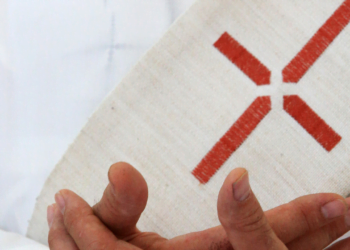No products in the cart.
What Is The Significance Of The Cross In Christianity?
This post contains paid and/or affiliate links. I make a small commission at no extra cost to you. Please see our Privacy Policy.
The cross holds immense significance in Christianity, serving as a central symbol of the faith. It represents the crucifixion of Jesus Christ and the redeeming benefits of his Passion and death. As believers, the cross is a physical symbol and a powerful reminder of our faith and the sacrifice Jesus made for our redemption.
In various ceremonial contexts, the cross is used as a gesture of profession, prayer, dedication, and benediction. It is a visible expression of our devotion to Christ and a representation of the Christian faith.
The cross has different variations, including the crux quadrata, or Greek cross; the crux immissa, or Latin cross; the crux commissa, or St. Anthony’s cross; and the crux decussata, or St. Andrew’s cross. These variations and the forms found in processional, altar, and heraldic contexts originated from these four basic types.
Key Takeaways:
- The cross is a central symbol in Christianity, representing the crucifixion of Jesus Christ and the redemption of humanity.
- It serves as a sign of faith and a reminder of Jesus’ sacrifice for our sins.
- The cross has different variations and forms, each with its own significance and history.
- Believers use the cross in various ceremonial contexts to express their devotion to Christ.
- The cross has deep meaning for Christians and represents the essence of their faith and redemption.
The Symbolism of the Cross in Christianity
The significance of the cross in Christianity can be understood from two perspectives.
First, the cross symbolizes the atoning death of Jesus. It serves as a reminder of the sacrifice he made for the sins of humanity. The cross can be a powerful visual reminder of the redemption and forgiveness that believers receive through Christ’s death. Whether worn as jewelry or displayed in a church sanctuary, the cross helps believers humble themselves before the ones who died for their sins.
Second, the cross represents an event that goes beyond its physical appearance. While on the surface, it may seem like a tragic event, the crucifixion of Jesus on the cross was a triumph over evil and the spiritual forces of darkness. It was through his death on the cross that Jesus disarmed the powers and authorities and made a public spectacle of them. The cross redefines power in the kingdom of God, demonstrating strength through weakness and as a reminder that true power is found in humble service.
The Transformative Power of the Cross for Believers
The cross holds immense transformative power for believers. It signifies the inauguration of a new covenant, as Jesus interpreted his death during the Last Supper. Through the cross, a new community of believers emerges, where the Torah is inscribed on their hearts, and unity is forged through the pouring out of Jesus’s blood. This transformative covenant establishes a profound connection between God and His people.
Moreover, the cross brings a resounding victory over sin and death. It cancels the record of debt, granting believers the freedom to die to sin and live in righteousness. In this triumph, the cross not only defeats Satan and the spiritual forces of darkness but also demonstrates the untamed power of Christ’s sacrifice over all powers and authorities that defy God’s kingdom.
Through the power of the cross, believers experience true reconciliation, peace, and unity with the Father. It offers a profound pathway for all people to be reconciled to God, fostering harmony and healing in a broken and divided world. The cross is not merely a historical event; it calls Christians to action.
It prompts us to deny ourselves, take up our cross, and walk in the sacrificial service and humility exemplified by Jesus himself.
By embracing the significance of the cross, believers can undergo a personal transformation, allowing the teachings of Jesus to infuse every aspect of their lives.











